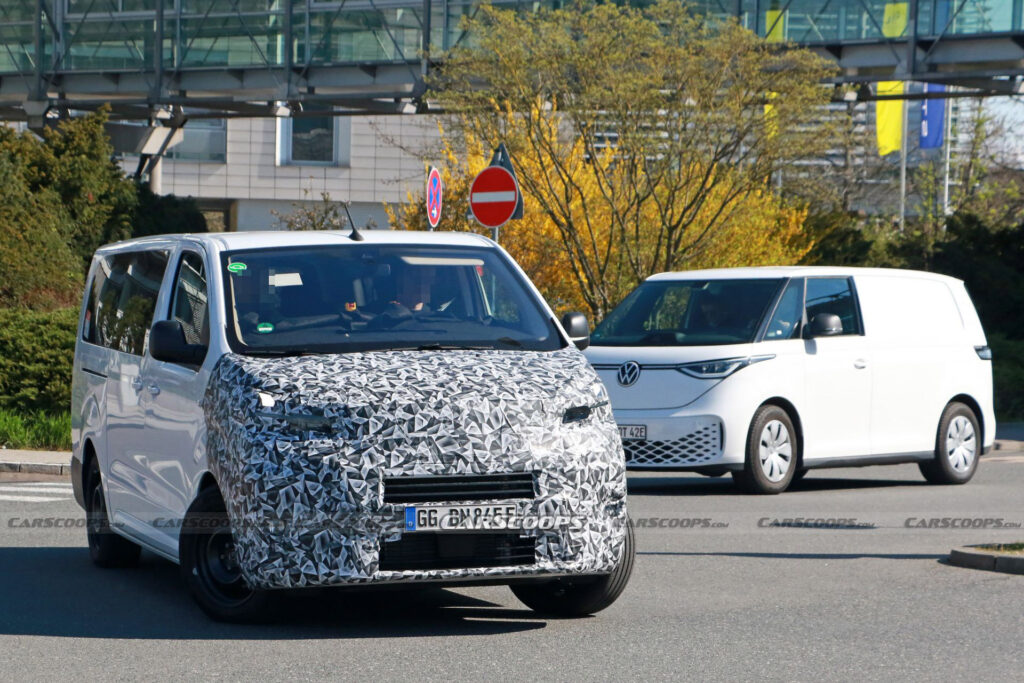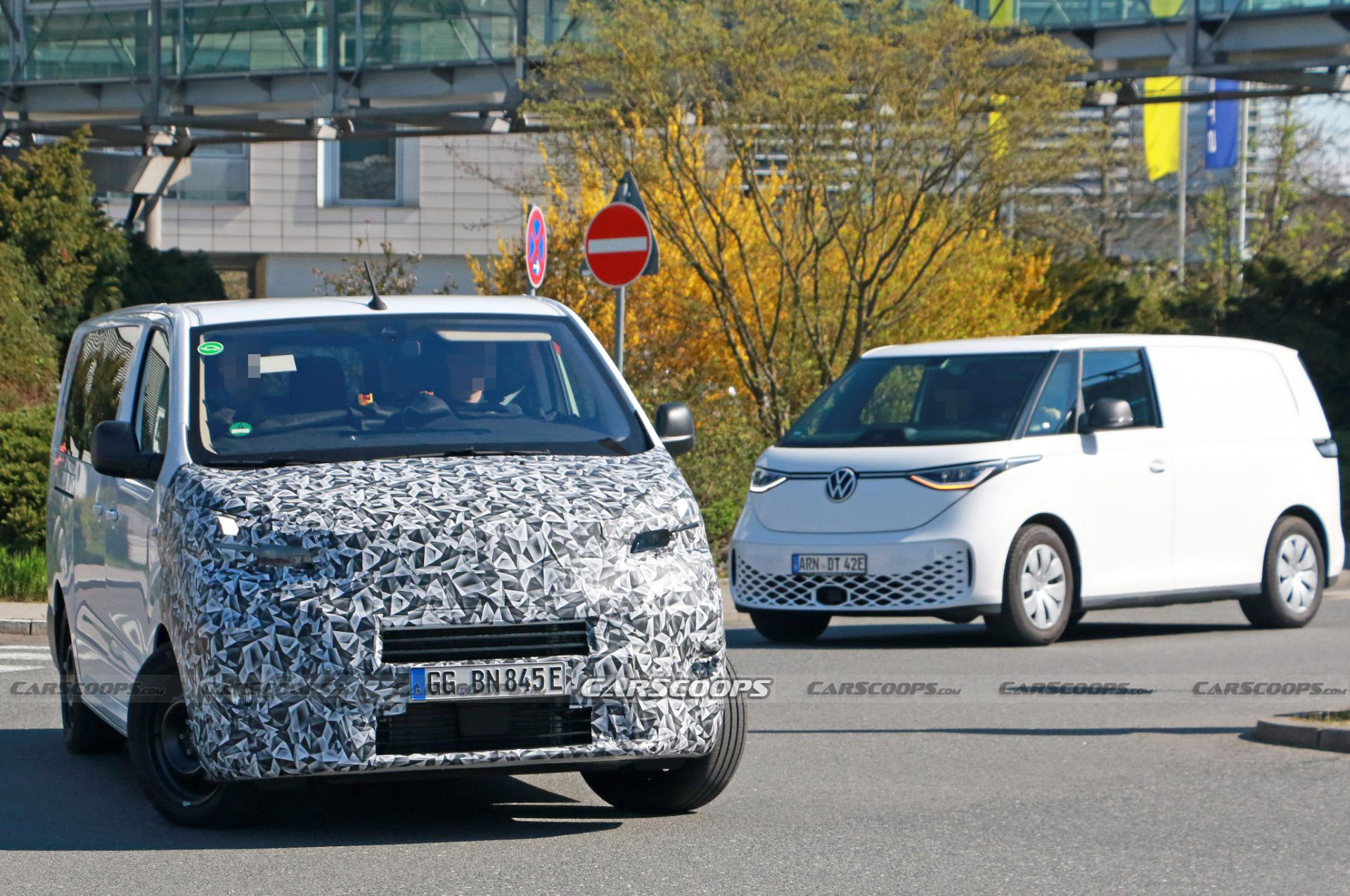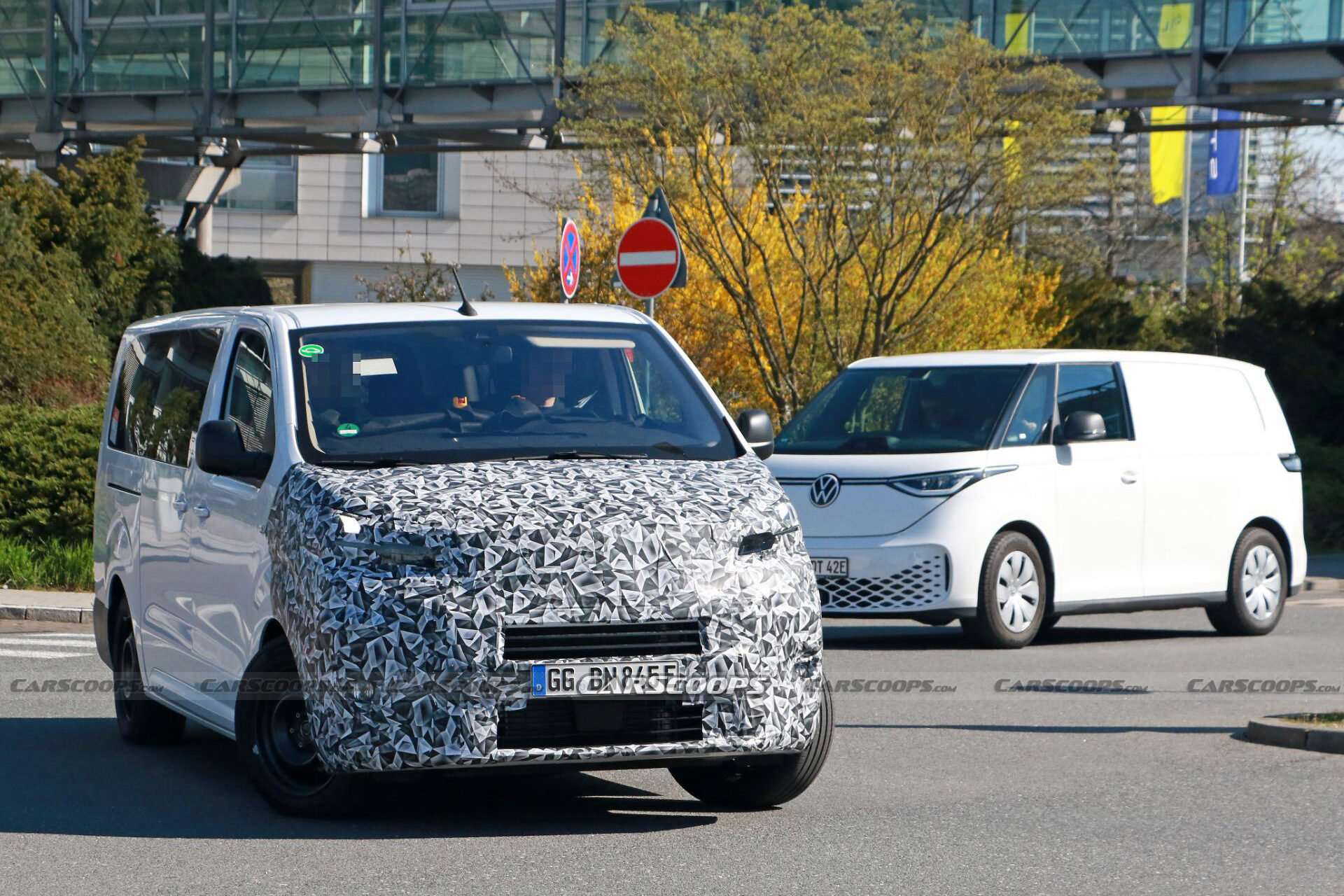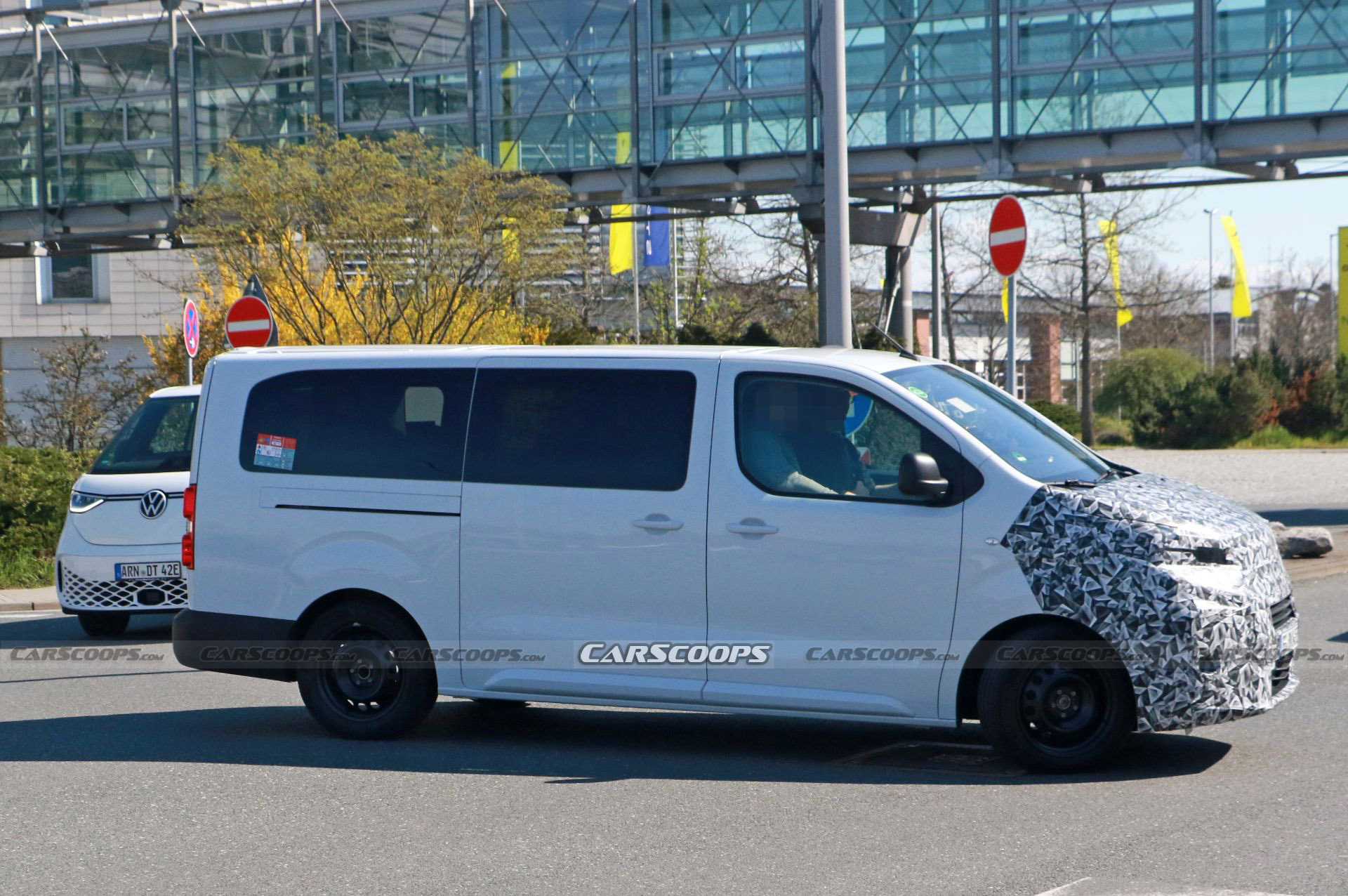Vans usually have longer product cycles than cars or SUVs, but this doesn’t mean that automakers don’t pay attention to their mid-lifecycle updates. In that context, the large group of Stellantis vans sold under the badges of Citroen, Peugeot, Opel, Fiat, and Toyota will soon receive small styling tweaks, more tech inside the cabin, and more efficient electric powertrains in order to stay relevant in a competitive market.
The current generation of the Citroen Jumpy, Peugeot Expert, and Toyota ProAce were the first ones to debut in 2016, with the Opel Vivaro following in 2019 and the Fiat Scudo arriving in 2022. All of them are expected to benefit from the same updates, as with the equivalent passenger minivans which are sold under different nameplates (Citroen SpaceTourer, Peugeot Traveller, Toyota ProAce Verso, Opel Zafira Life, and Fiat Ulysse).
Read: VW ID. Buzz Long-Wheelbase Spied As A Maxi Electric Microbus
Our spy photographers couldn’t identify the specific brand of the camouflaged prototype. Our guess given the timing of the launches is Citroen, but it could also be an Opel since the van was photographed in Germany and was following a current-gen Opel Vivaro. More importantly, the convoy was joined by a VW ID. Buzz Cargo, which is there for benchmarking purposes.
The camouflage wrap covering the entire front end of the prototype doesn’t give away many of the styling changes but suggests that this is going to be a proper facelift. The highlight will likely be the new LED headlights which appear to be slightly larger and more aggressive than before. Those will be combined with a redesigned bumper and bonnet, with the rest of the bodywork being largely carried over. Each brand will add its own styling traits focused on the unique grille and small changes on the bumper trim.
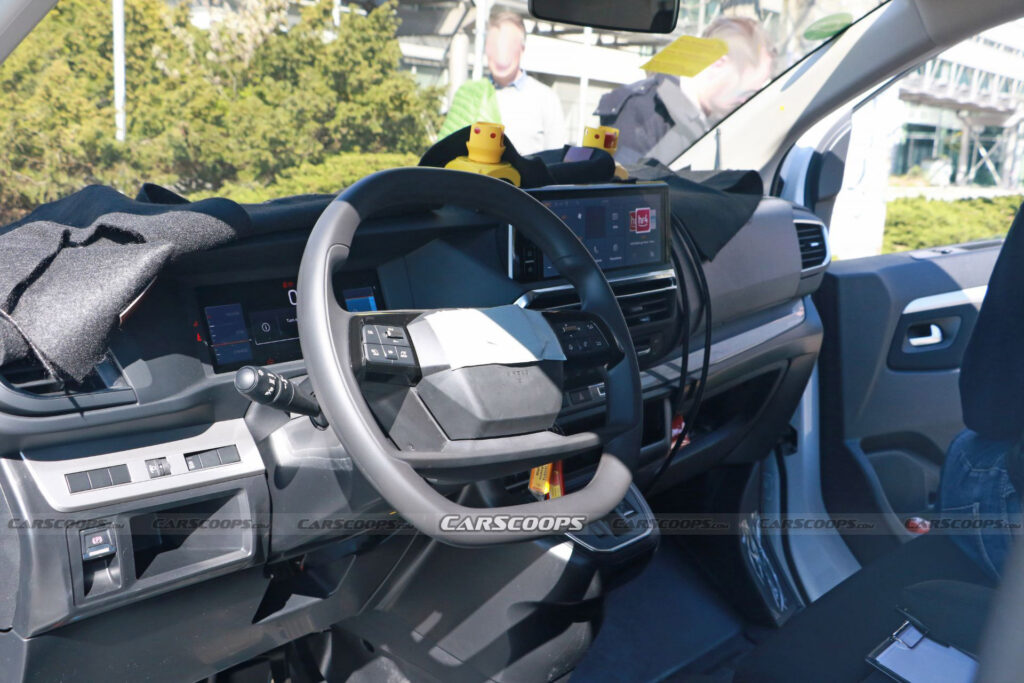
The prototype was also caught with the doors open, allowing us a glimpse inside the cabin. The dashboard is overhauled, with the addition of a digital instrument cluster and a much larger free-standing infotainment touchscreen above the new climate vents. Other changes include the new steering wheel with integrated buttons, which will bear the emblem of each brand. We should also expect a wider choice of available ADAS systems, bringing the Stellantis vans on par with more recent rivals.
Besides the exterior and interior updates, the models will most likely benefit from a refreshed electric powertrain. Several Stellantis EVs have already benefited from a more powerful and more efficient single electric motor producing 154 hp (156 PS / 115 kW) instead of the old unit’s 134 hp (136 PS / 100 kW). This is combined with a slightly larger battery pack with a capacity of 51 kWh instead of 50 kWh, resulting in a longer range. Since early 2022, Stellantis decided to offer the passenger versions of its vans exclusively in EV form, but the LCVs could retain the diesel option for a few more years before the combustion engines become obsolete in Europe.
Our sources – and logic – suggest that the debut of the updated Stellantis vans will gradually start in late 2023 or in early 2024. The oldest members of the family (Citroen, Peugeot, Toyota) will likely appear first, with the more recent ones (Opel, Fiat) following in the future.




